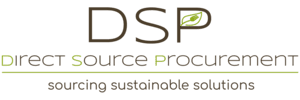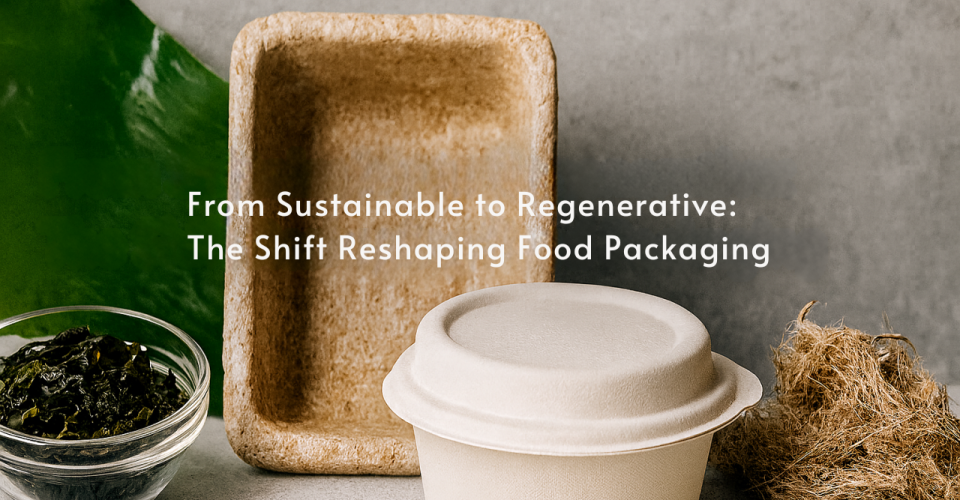From “Less Harm” to “More Good.” Could Your Packaging Help Restore the Planet?
For a long time, sustainable packaging has meant one thing: reduce the damage. Use less plastic. Create less waste. Shrink the carbon footprint. But today, a new idea is gaining ground regenerative packaging.
Instead of focusing only on doing less bad, regenerative packaging aims to do more good helping restore ecosystems, improve soil health, and even remove carbon from the atmosphere.
This shift reflects a bigger change in how food brands think about sustainability: not just as a way to meet compliance, but as a way to lead with values, connect with conscious consumers, and prepare for the future.
What Is Regenerative Packaging?
Regenerative packaging goes beyond biodegradable or compostable. These materials are often made from agricultural byproducts, fast-growing crops, or living organisms — and they’re designed to support natural ecosystems.
A few standout materials include:
-
Mycelium (mushroom roots): Used for molded trays and insulation — fully compostable and low-impact to grow
-
Seaweed (kelp-based films): Dissolvable, edible in some cases, and requires no chemicals or fertilizers
-
Bagasse (sugarcane waste): Common in food containers, especially when sourced ethically
-
Hemp and flax shives: Fiber-rich and grown with very little water or chemical input
These aren’t just sustainable options they’re climate-positive materials that contribute to soil health, biodiversity, and circular economies.
Why Is Regeneration on the Rise in Food Packaging?
More consumers especially Millennials and Gen Z are looking for products that match their environmental values. Research shows they’re even willing to pay more for eco-friendly or regenerative packaging.
But the business case goes beyond customer perception:
-
Brand Differentiation: Stand out in a crowded market by turning your packaging into a story of environmental impact
-
Compliance & Policy: Stay ahead of shifting regulations like EPR (Extended Producer Responsibility) and green initiatives
-
Cost Efficiency (Long-Term): Regenerative inputs reduce reliance on fossil-fuel-based packaging and stabilize supply chains
-
Supply Chain Transparency: Working with regenerative suppliers improves traceability a key advantage for ESG reporting
How Can Food Brands Start Small With Regenerative Packaging?
You don’t have to overhaul your packaging overnight. Here are 3 ways to begin:
-
Map Your Packaging Lifecycle: Trace where your packaging materials come from and where they go. Find areas where regenerative alternatives could be tested.
-
Talk to Your Suppliers: Ask about material sources, certifications, and regenerative options. You might be surprised at what’s already available.
-
Pilot a Limited-Edition Launch: Try regenerative packaging with one product line. Set simple metrics like compostability or customer feedback. Learn and scale.
Even a small shift can begin a big change for your brand and for the planet.
What Real-World Examples Show Regenerative Packaging in Action?
Regenerative packaging is already making an impact in real-world food service:
-
Seaweed-based films are replacing plastic in food delivery containers
-
Mycelium packaging is cushioning fragile products with zero plastic
-
Agricultural waste like sugarcane and flax is being turned into food trays
-
Natural protein coatings are being used to preserve food and cut plastic use
This is not just innovation for the sake of trend. It’s a response to what the planet and customers are asking for.
What Does This Shift Mean for the Future of Food Packaging?
What if your packaging didn’t just “do less harm”… but actually did good?
In a world of growing environmental urgency, this is a chance to think beyond compliance and tap into regenerative values. Businesses that take the lead today will be the ones remembered tomorrow — not just for what they sold, but for what they stood for.
Want to dive deeper into regenerative materials, real-world examples, and how to future-proof your packaging strategy?
👉 Read the full newsletter here → LinkedIn Newsletter
📲 Connect with us: Instagram | Facebook | LinkedIn
FAQs
Q1. How is regenerative packaging different from sustainable packaging?
Sustainable packaging reduces harm by using less plastic or waste. Regenerative packaging goes further, restoring ecosystems and improving soil health.
Q2. What materials are used in regenerative packaging?
Examples include mycelium, seaweed, bagasse, hemp, and flax shives—all grown or sourced with minimal impact and positive ecological benefits.
Q3. Is regenerative packaging affordable for small brands?
Yes. Many regenerative materials like bagasse and hemp are cost-competitive, especially when piloted in limited product runs.
Q4. Why does regenerative packaging matter for customers?
Millennials and Gen Z want brands that align with environmental values and are willing to pay more for regenerative, climate-positive options.

